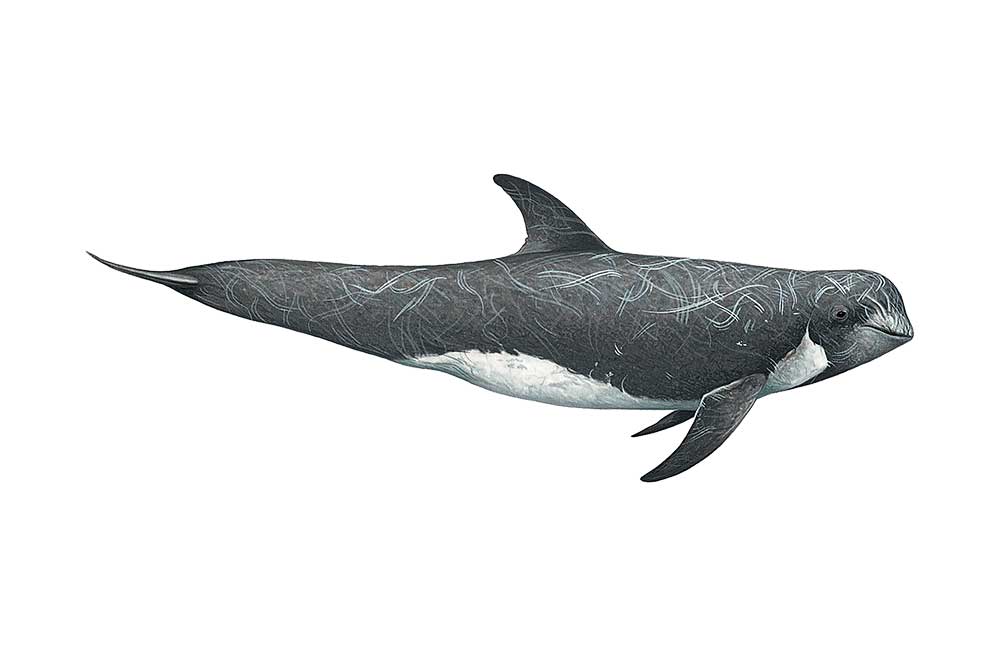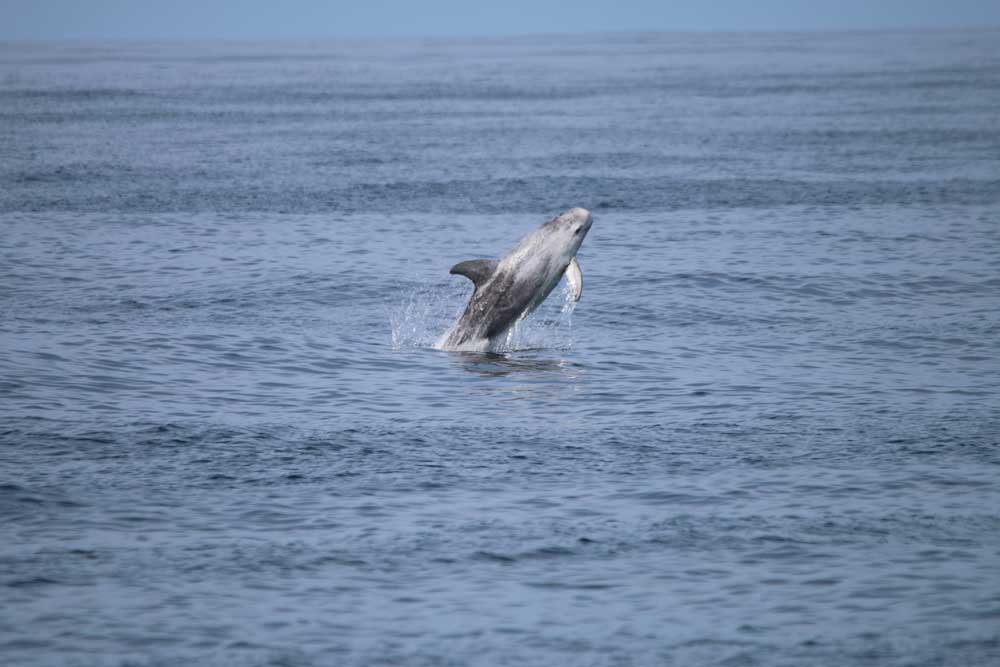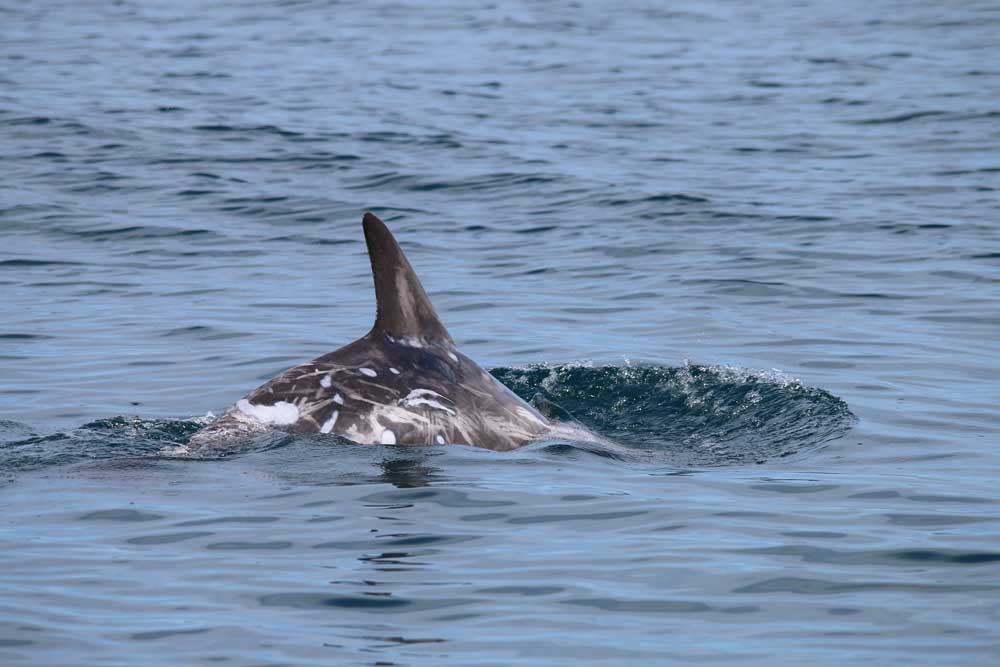
Latin: Grampus griseus
Gaelic: Cana
CETACEAN FACTFILE:
Months: January – December
Length: Up to 3.8 metres
Range: Widely distributed in all major oceans, absent in polar regions
Threats: Marine litter, pollution, acoustic disturbance
Diet: Mainly squid, some octopus and cuttlefish
PHYSICAL DESCRIPTION
Risso's dolphins have a robust, stocky body and a tall, falcate (sickle shaped) dorsal fin. The melon (forehead) is blunt and bulbous with a unique V-shaped crease running from the upper lip to the blowhole. The colour pattern varies greatly between individuals, and with age. Calves are born grey, but turn darker grey to dark brown as they become juveniles. As they age, the skin tone lightens to silvery-grey in some cases and the body is increasingly covered with scratches and scars inflicted by other Risso’s dolphins and prey species such as squid. They have no prominent beak, and rarely have teeth in the upper jaw and only four to fourteen teeth in the lower jaw. Adult Risso’s dolphins measure between 2.6 to 3.8 metres in length and can live for more than 30 years.
BEHAVIOUR
In the Hebrides, Risso's dolphins are usually seen singly or in groups of up to 20 animals, although in other areas they are reported in large groups of several hundred individuals. Social behaviour is gregarious and sometimes rough, possibly accounting for some of the scars and tooth rake marks seen in adult animals. In the Hebrides, Risso's can be seen breaching, tail slapping, spy-hopping, splashing and sometimes striking one another, although they are more commonly seen travelling and surfacing slowly, rarely approaching vessels or bow-riding.
HABITAT AND DISTRIBUTION
Risso’s dolphins are widely distributed throughout most oceans between 60° North and 55° South. The north of Scotland represents the northern limit for this species. In the Hebrides, Risso's dolphins tend to inhabit deeper water, which is home to their preferred prey of squid, octopus and cuttlefish. They can occasionally be seen in coastal areas..
FOOD AND FORAGING
Risso's diet consists mainly of squid, with some octopus and cuttlefish, and they generally feed at night-time when their preferred prey migrate towards the surface. They are able to dive for up to 30 minutes down to depths of 400-500 metres, and sometimes forage cooperatively. Their soft-bodied prey is caught with teeth in the lower jaw and swallowed whole. Scars from such encounters are visible on the skin surface.
STATUS AND CONSERVATION
Many squid eating marine animals, including turtles and seabirds, swallow plastic bags that they mistake for their prey. Once ingested, plastic may accumulate in the stomach of the animal causing starvation and eventual death. It is likely that Risso’s dolphins commonly encounter plastic bags in the ocean and may be affected by this. Risso’s dolphins are also subject to incidental capture in fishing nets causing drowning, may be disturbed by noise produced by offshore oil and gas exploration, and are exposed to marine pollutants including organochlorines such as pesticides and industrial chemicals (PCBs).
Risso's Dolphin Hotspot Map






